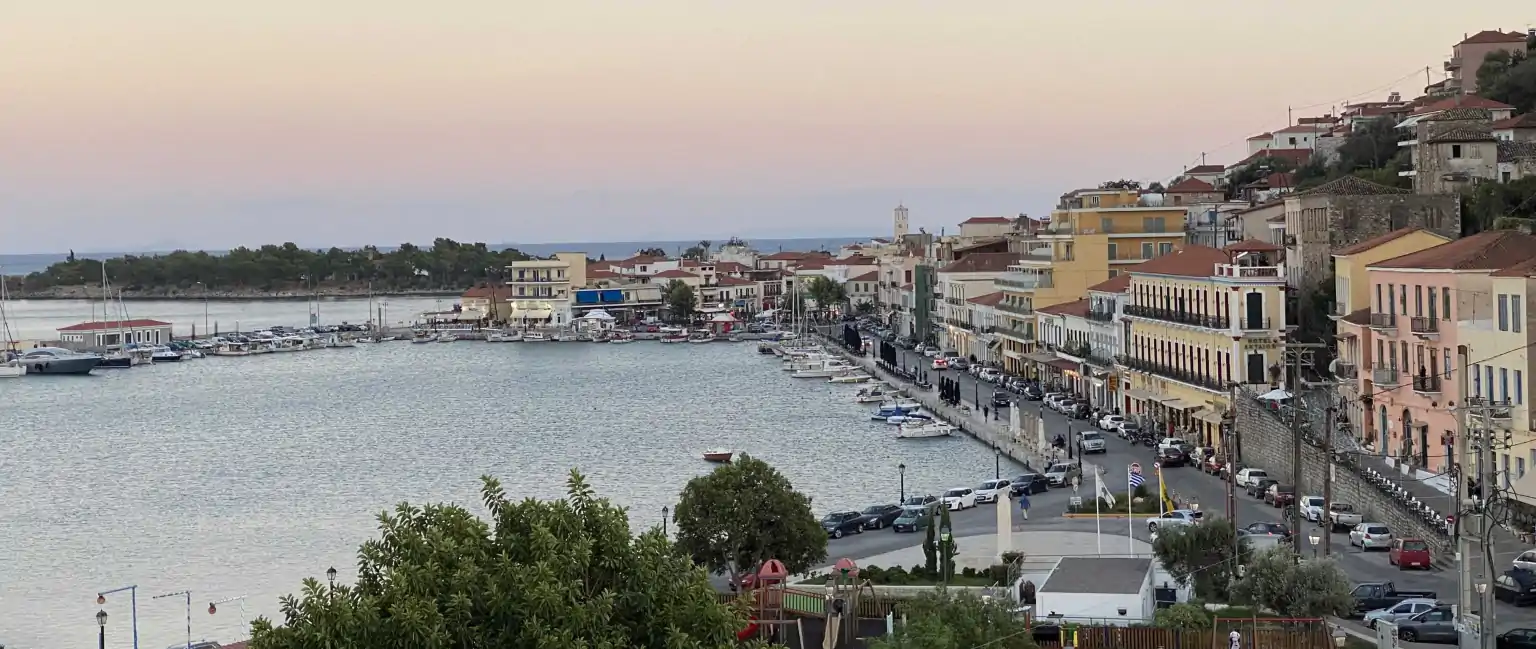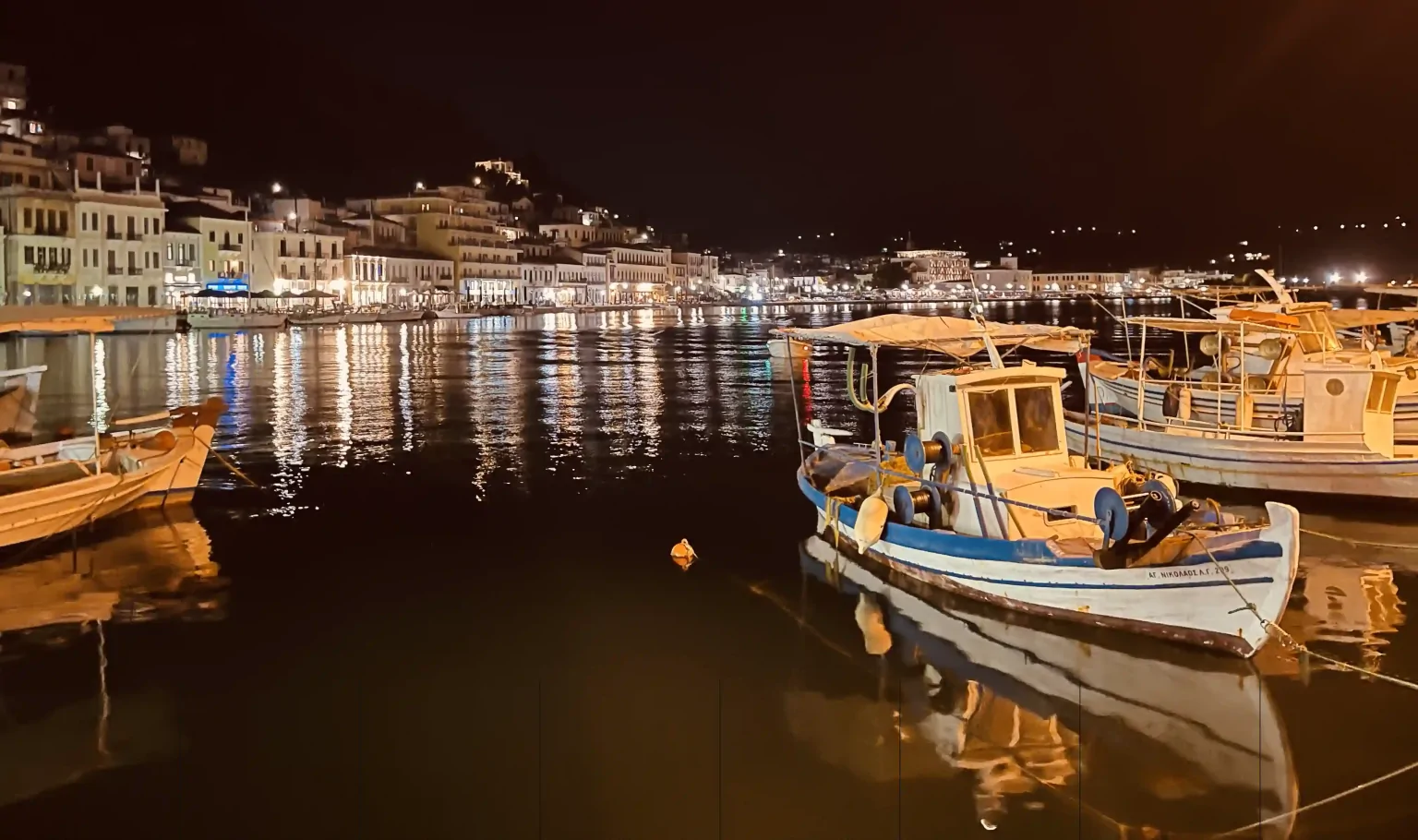Gythio

The port city with around 7,000 inhabitants is divided into a square new town to the east and an old town. The picturesque old town stretches up the hillside from the harbour and can be explored via many steps and narrow streets. Many neoclassical houses and ruins from the 19th century bear witness to Gythio’s ancient glory days. The origins of Gythio lie in the Bronze Age. In ancient times, the city gained importance as a harbour for the Spartan fleet. During Roman times, a theatre was built on the eastern flank of the Acropolis and thermal baths were constructed. The ruins of the theatre can still be seen today.
In the Middle Ages and in modern times, many inhabitants of Mani, characterised by piracy and feuds, migrated to the larger villages. As a result, Gythio quickly developed into a small harbour town with a population of 3686 in 1889.
Marathonisi, a small island, is ideal for a stroll. It is connected to the mainland by a dam and has a church, a lighthouse and a small museum.
Gythio invites you to dine on the harbour promenade. The cuisine is excellent. The fish restaurant Saga is highly recommended.
